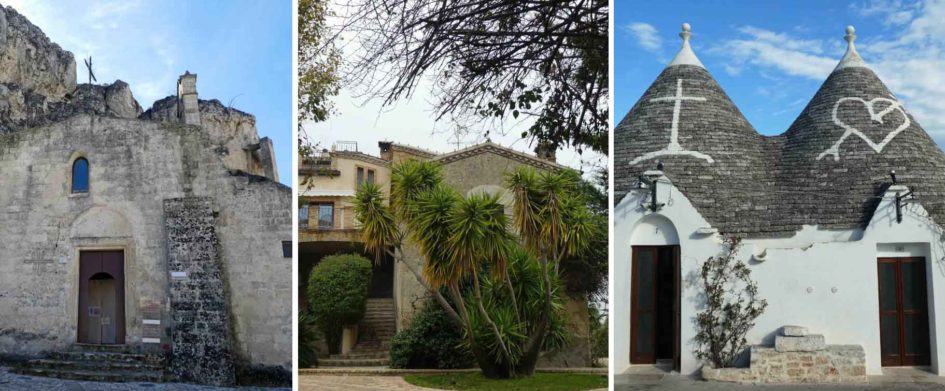Last week we set off for a few days of exploring. As well as tootling around Puglia, our travels took us south into the other two regions at the foot of Italy, Basilicata and Calabria. It was a trip marked by incredible history and unusual accommodations.
The city of Matera in Basilicata is known for the ancient cave dwellings carved into its steep hillsides. First occupied in the Stone Age, the natural limestone caves were dug out and extended through the centuries. By the 1950s more than 15,000 people, mostly poor farmers, were living in the cave houses in conditions so dreadful the Italian Government was forced to step in. The families were relocated to the modern part of the city on the flat land above the ravine and the cave houses, or sassi, were abandoned.
Fast forward 70 years and in a complete turnaround, the sassi – now with UNESCO World Heritage status – are driving the economic and cultural development of the city. Many of the original cave dwellings have been opened up and modernised by the descendants of those who had lived there, and the city now welcomes visitors from around the world who come to see – and stay in – Matera’s caves.
Further south in Calabria, our accommodation was almost as far from cave-like as it’s possible to get. We stayed at the beautiful Masseria Mazzei, the family home of a friend from Rome. Masserie, the large estate houses of working farms, are common in Italy’s south. The original 16th century masserie were fortified as protection against invaders; marauders were deterred by high stone walls and large rocks or hot water dropped from above.
Today many families have opened their masserie to guests and the Masseria Mazzei, in the Calabrian countryside, is one of the most lovely. Our room at the top of the house (the ‘Nest’) looked out over the farm’s olive groves and orchards. And just a few kilometres away the little town of Rossano is the unlikely home of one of the world’s most important religious texts.
Our final destination on this trip was in Puglia. Alberobello is famous for its trulli houses, the unique drywall stone huts with conical roofs. Like the sassi in Matera, trulli were once the homes of large farming families. Often up to 15 people lived together, with one or two small rooms serving as kitchen, bedroom, tool storage and animal shelter.
Today more than 1500 trulli remain and while most are still family homes (though with significantly modernised interiors), a few are available as B&B accommodation. And again like the sassi, Alberobello’s trulli have been awarded UNESCO World Heritage status and are an important drawcard for tourists.
La grotta, il nido e il trullo … three distinctive types of accommodation, each one opening a window to the past and, at the same time, helping to build a stronger economic future in these beautiful regions of Italy.

04/06/2018 at 5:46 am
Each style of dwelling looks like it could be in a completely different country! So incredible! 😀
03/23/2018 at 11:15 pm
Just the day before your post I was reading about Matera’s caves in the travel section of the paper and wondering if you had heard about them but of course you had them, and more, all covered!
Such different styles of dwelling in a small area and huge socio economic differences in what is not a very large country.
03/25/2018 at 6:00 pm
Thanks, Sal. All ideas and suggestions happily received! 🙂